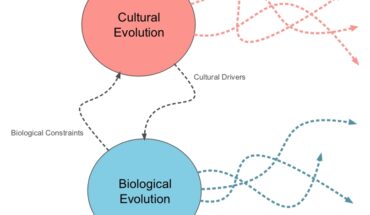The Rolling Stone gang-rape story, which centered on Greek life at the University of Virginia, proved to be untrue as written. Still, the fallout prompted critical conversations about how to end gender-based violence on university campuses. Photo Credit: gargola87/Wikimedia Commons
The November 19, 2014, publication of “A Rape on Campus” in Rolling Stone magazine threw the University of Virginia into a frenzy of institutional responses. The article reported the story of a woman who had been gang raped at one of the university’s fraternity houses. The university’s president, Teresa Sullivan, suspended Greek social events for the rest of the semester and anti-rape protestors marched on Rugby Road, a central site of Greek life. The university’s Greek system came under intense criticism for how its partying, hazing rituals, and sex and gender norms were implicated in sexual violence. Students and faculty hastily arranged meetings to craft their immediate responses as well as long-term reforms.
Subsequent reporting by The Washington Post and a follow-up police investigation showed that the gang rape, as reported, never occurred. This led to a backlash in defense of Greek organizations, with some Greek alumni threatening to withhold contributions to the university, and lawsuits on behalf of individuals and organizations claiming to have been slandered.
For anti-rape activists, this turn of events was a disaster, since public awareness and concern for gender-based violence at U.S. universities had been growing over the past decade. In 2007 and again in 2015, survey results showed that one out of every five university women in the United States will be sexually assaulted during her undergraduate career.
Like many institutions of higher learning, the University of Virginia recognized this statistic and, long before the fiasco, had been working to make its campus safer, primarily through student advocacy and support groups. Yet the debunking of the Rolling Stone story gave those who were part of the backlash against anti-rape activists an inroad to question the emerging zeitgeist. Even though such violence was understood to be a problem across U.S. campuses, the story riveted the public and took the edge off the urgency to do something.
But on campus, in the aftermath of the Rolling Stone incident, the University of Virginia, where I am based, redoubled its efforts to address rape by adding the Green Dot program. This program trains community members to look out for each other’s safety and act when necessary—instead of remaining silent bystanders. Run by administrators and staffed mainly by student volunteers, Green Dot excited many students, staff, and faculty who signed up for training workshops. In its first year at the University of Virginia, Green Dot reached almost 2,000 people—a significant number but only a small percentage of the total community.
Green Dot describes itself as “a comprehensive approach to violence prevention” that works by training the members of a community, one person at a time, in “proactive behaviors that establish intolerance of violence as the norm.” People proficient in the new norm become “green dots,” and when these “engaged and proactive bystanders” come to outnumber the untrained “red dots” of the community, the culture will have changed.
I too enrolled in a Green Dot workshop. But I quickly became convinced that such programs, although well-intentioned, are bound to fail because they attack a social problem by way of an individualistic solution. And since administrators set it up and students run it, Green Dot bypassed the faculty, who were seen as community members to be trained or “sensitized” but not as experts to be called on to educate students about the larger social issues surrounding rape—and possible solutions. In other words, the members of the university community most skilled at analyzing social problems were not consulted.
I stepped forward with my own solution. Faculty, I thought, should teach courses in response to the crisis, and so in the fall of 2015, I dug into these issues in a new course called “Culture, Gender, and Violence.” With a group of 120 students, I investigated the cross-cultural research on rape.
In reading about cultures in which rape is rare, or unimaginable, students became aware of how the prevalence of rape in our own society is more a function of a system that teaches men to be men, and women to be women, in certain ways—and less a result of biology or individual choices. The Gerai, for example, a community of Dayak peoples (non-Muslim Indigenous people) in Indonesian Borneo, think that “women’s sexuality and bodies are no less aggressive and no more vulnerable than men’s,” writes anthropologist Christine Helliwell, based at Australian National University in Canberra. For the Gerai, sexual assault is “almost unthinkable,” Helliwell says.
By contrast, in the United States rape stems from our cultural definitions of sex and gender and the patterning of social relationships that follows from them. And the Greek system, particularly, reproduces harmful gender norms among college students, as Peggy Reeves Sanday showed in Fraternity Gang Rape. In her book, she detailed how fraternities taught men to be men by expelling what they saw as their own womanly tendencies and using violence against women—ritualized as gang rape—as a rite of passage for full entry into the brotherhood of fraternity men.
Sanday, a feminist anthropologist who was at the University of Pennsylvania at the time, wrote her book in response to a rape on her campus. But in her previous work—extensive cross-cultural studies of rape—she had found that rape was rare in many societies, especially those in which women had high social status. In poignant contrast, Fraternity Gang Rape exposed how both college social life and the treatment of rape in the U.S. legal system conspire to reproduce the low status of U.S. women.
It is much easier for universities to establish programs like Green Dot that emphasize changing the choices and actions of individuals than it is for them to attack the institutional structures—fraternities, athletics, the advertising industry—that have a much greater influence on the gender norms that guide students’ choices. Universities depend too heavily on those institutions (for many reasons, but in most cases because they are generators of alumni donations) to try to change them.
Indeed, breaking news from The Washington Post—based on a Freedom of Information Act request—details how pro–University of Virginia lobbying led the U.S. Department of Education’s Office for Civil Rights to tone down a draft report of its four-year investigation of sexual violence at the university. Missing from the final letter was an assertion from the first letter that the university had “abdicated” its responsibility for oversight of the Greek system—to the fraternities—in cases of sexual violence involving fraternity members.
I do not propose the abolition of the Greek system as the solution to gender-based violence at U.S. universities, but it seems clear that we should pressure administrators to exert more control over fraternities. And, as a faculty member, I argue that we should multiply the number of college courses that can educate students about the social underpinnings of rape. Let’s start there, and perhaps our next steps will then become clear.




